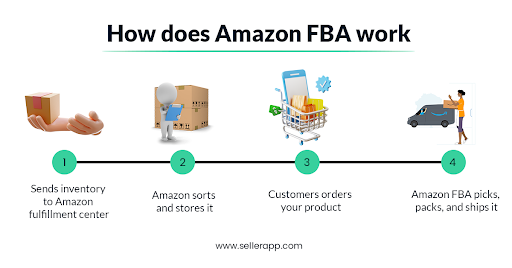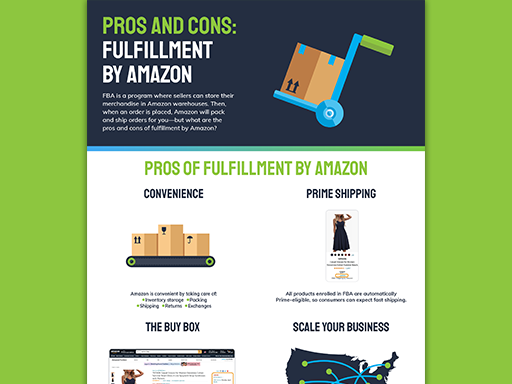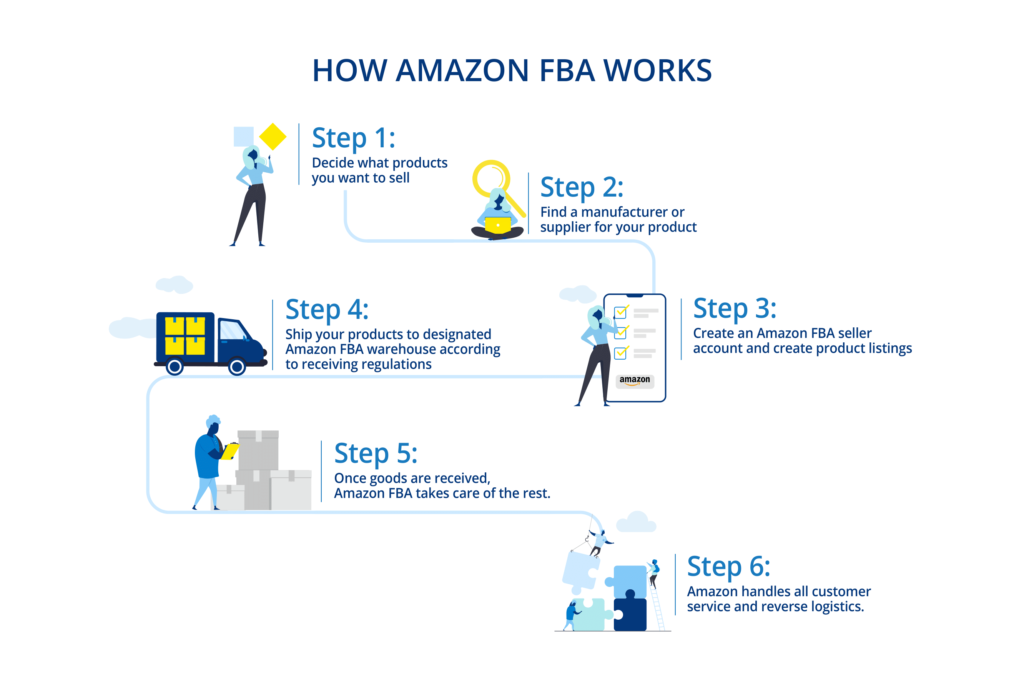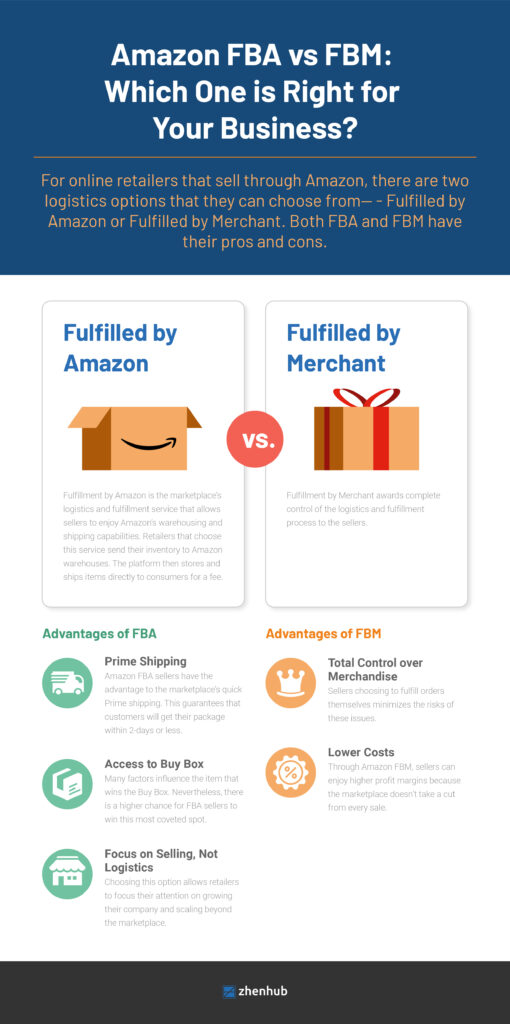Uncover the secrets of Amazon FBA fees and learn how to maximize profits with strategic navigation. Don’t miss out!
Table of Contents
Introduction to Amazon FBA
Have you ever wondered how people sell products on Amazon without having to worry about storing, packing, and shipping them? Well, that’s where Amazon FBA comes in! FBA stands for Fulfillment by Amazon, and it’s a service that makes selling online a whole lot easier for both sellers and customers.
What FBA Stands For
When we say ‘Fulfillment by Amazon,’ we mean that sellers can send their products to Amazon’s warehouses, where the items are stored until they’re sold. Once an order is placed, Amazon takes care of picking, packing, and shipping the product to the customer. It’s like having your own personal team of helpers handling all the logistics for you!
The Basic Idea Behind Amazon FBA
Imagine you have a toy store, and you want to sell your toys online. Instead of keeping all your toys at home and packing and shipping each order yourself, you can use Amazon FBA. You send your toys to Amazon, and they do all the hard work for you. This means you can focus on creating great toys while Amazon handles the rest.
Why Use Amazon FBA?
Are you curious about why sellers choose to use Amazon FBA? Let’s dive into the perks of utilizing this service and how it can benefit you as a seller.
The Perks of FBA
Amazon FBA offers sellers a host of advantages that make selling online much simpler. One major benefit is the time and hassle it saves sellers. Instead of worrying about storing products, packing them up, and shipping them out, Amazon takes care of all that for you. This means you can focus more on sourcing products and growing your business rather than handling logistics.
Another advantage of using Amazon FBA is the access to Amazon’s extensive customer base and prime shipping benefits. When customers see the “Fulfilled by Amazon” tag, they know they’ll receive their orders quickly and reliably, which can lead to increased sales and customer satisfaction.
By letting Amazon handle the fulfillment process, sellers can also benefit from reduced shipping rates. Amazon negotiates lower shipping prices with carriers due to the high volume of packages they send out. This can result in cost savings for sellers in the long run.
Overall, Amazon FBA can streamline your selling process, increase customer trust, and save you time and money in the long run. It’s a convenient way to grow your online business and reach a wider audience without the headache of logistics.
Understanding Amazon FBA Fees
When you decide to sell products through Amazon’s FBA program, it’s important to understand that there are fees involved in using this convenient service. Let’s delve into the world of Amazon FBA fees and how they can impact your business.

Image courtesy of www.sellerapp.com via Google Images
Types of FBA Fees
Amazon charges sellers various fees for the storage, packing, and shipping services they provide. These fees can include storage fees, fulfillment fees, and referral fees. Understanding each of these charges is crucial to accurately calculating your costs and setting prices for your products.
How Fees Vary By Product
It’s essential to recognize that Amazon FBA fees can change depending on the type of product you are selling. For example, fees may differ for a small, lightweight item like a piece of jewelry compared to a large, heavy item like a piece of furniture. Be mindful of these fluctuations to ensure you are pricing your products adequately.
Calculating Your Costs
When selling products on Amazon using the FBA service, it’s essential to understand the fees involved. By calculating your costs accurately, you can make informed decisions to maximize your profits. Let’s explore how you can estimate your expenses with the help of Amazon’s fee calculator.
Using Amazon’s Fee Calculator
Amazon provides a user-friendly fee calculator tool that allows sellers to input various details about their products to determine the associated fees. Here’s how you can use this handy tool:
1. Log in to your Amazon seller account and navigate to the “Fulfillment by Amazon” section. Look for the fee calculator tool.
2. Input the specifics of the product you plan to sell, such as its category, dimensions, weight, and selling price.
3. The fee calculator will then generate a breakdown of the estimated costs, including the referral fee, fulfillment fee, and any other applicable charges.
4. By adjusting the product details, you can see how different factors impact your overall expenses, allowing you to make informed decisions about pricing and product selection.
Using Amazon’s fee calculator can give you a clear picture of the costs associated with selling your products through FBA. This tool empowers sellers to strategize effectively and optimize their pricing strategies to enhance profitability.
Examples of Amazon FBA Fees
Let’s say you’re a seller on Amazon using FBA to sell a toy. Here’s a breakdown of the fees you might encounter:

Image courtesy of omnitail.net via Google Images
– Fulfillment Fee: $3.00 per item
– Monthly Storage Fee: $0.50 per cubic foot
– Referral Fee: 15% of the item’s selling price
These fees can vary based on the size and weight of the toy, but this gives you an idea of the costs involved in selling a popular item.
Fee Example for a Book
If you decide to sell a book through Amazon FBA, the fees could look something like this:
– Fulfillment Fee: $2.50 per item
– Referral Fee: 15% of the item’s selling price
– Closing Fee: $1.80 per item for media products
Just like with the toy example, the actual fees can fluctuate based on various factors, but these are common charges you might encounter when selling a book using FBA.
Saving Money on FBA Fees
When selling products on Amazon using FBA, it’s essential to keep a close eye on the fees involved to maximize your profits. Here are some tips to help you save money on FBA fees and boost your bottom line.
Picking the Right Products
One way to save money on FBA fees is to choose products that are not too expensive to ship. Large or heavy items can incur higher fees due to their size and weight. Opt for smaller, lighter products that can be shipped more cost-effectively to minimize your expenses.
Keeping Track of Fees
It’s crucial to monitor and track the fees associated with your FBA sales. Regularly review your fee breakdowns to identify any unnecessary charges or discrepancies that could be impacting your profits. By staying vigilant and proactive in monitoring your fees, you can make informed decisions to optimize your selling strategy and save money in the long run.
| Amazon Fee | Description | Percentage | Fixed Fee |
|---|---|---|---|
| Fulfillment Fee | Fee for Amazon to pick, pack, and ship your products | 15% | $3.00 |
| Referral Fee | Fee for using Amazon’s platform to sell your products | 15% | N/A |
| Closing Fee | Fee for each media item sold | N/A | $1.80 |
| Storage Fee | Fee for storing your products in Amazon’s warehouse | N/A | $0.75 per cubic foot per month |
Common Mistakes to Avoid
When using Amazon FBA, it’s essential to be aware of common mistakes that can end up costing you more than you expect in fees. By avoiding these errors, you can help maximize your profits and make the most of this convenient service.

Image courtesy of www.freightos.com via Google Images
Overlooking Small Costs
One mistake that sellers often make is underestimating the impact of small fees. While individual charges may seem insignificant, they can quickly accumulate and eat into your overall profits. It’s crucial to pay attention to even the minor costs associated with using Amazon FBA to ensure you’re not losing money unnecessarily.
Incorrect Fee Estimations
Another common error is not accurately estimating the fees you’ll incur when using Amazon FBA. Failing to account for all potential charges can lead to unpleasant surprises when you receive your payment summaries. By taking the time to calculate fees correctly upfront, you can better plan for your expenses and avoid any financial setbacks down the line.
Changes in FBA Fees
As an Amazon FBA seller, it’s essential to stay informed about any changes in fees that Amazon may implement over time. These changes can have an impact on your bottom line, so let’s explore the importance of keeping up with fee adjustments.
Staying Updated on Fee Changes
Amazon frequently updates its fee structure to adapt to market conditions and improve its services. It’s crucial for sellers to stay informed about these changes to avoid any surprises that could affect their profitability. By regularly checking Amazon’s seller resources or subscribing to notifications, you can stay ahead of any fee adjustments and adapt your selling strategy accordingly.
More Resources
For additional information on Amazon FBA, check out the following resources:

Image courtesy of zhenhub.com via Google Images
1. Amazon Seller University
Amazon Seller University offers free online courses to help you learn more about selling on Amazon, including FBA. You can access tutorials, webinars, and guides to expand your knowledge.
2. Seller Forums
Joining Amazon seller forums can connect you with experienced FBA sellers who can offer valuable insights and advice. These communities are a great place to ask questions and learn from others’ experiences.
3. Amazon FBA Blog
Stay up to date on the latest trends and tips for Amazon FBA by reading the Amazon FBA Blog. Here, you can find articles on best practices, success stories, and announcements from Amazon.
4. Amazon FBA Calculator Tools
Utilize different Amazon FBA calculator tools available online to help you estimate your costs and potential profits. These calculators can give you a clearer picture of your expenses and revenue.
Exploring these resources will enhance your understanding of Amazon FBA and equip you with the knowledge needed to succeed as a seller on the platform.
Conclusion
In this blog post, we’ve covered a lot of ground when it comes to Amazon FBA fees. We started by explaining what Amazon FBA is and why sellers might choose to use this service. We then delved into the nitty-gritty details of the different types of fees involved in FBA and how they can vary depending on the product being sold. It’s essential for sellers to understand these fees to accurately calculate their costs and maximize their profits.
By providing examples of fee breakdowns for common items like toys and books, we’ve made it easier for sellers to grasp how fees can impact their bottom line. Additionally, we’ve offered valuable tips on how to save money on FBA fees by choosing the right products and keeping a close eye on charges. Avoiding common mistakes like overlooking small costs and inaccurately estimating fees can also help sellers increase their profits.
It’s crucial for sellers to stay updated on changes in FBA fees to ensure they are aware of any adjustments that may affect their business. By regularly monitoring Amazon’s updates on fees, sellers can make informed decisions to adapt to these changes and stay profitable.
If you’re considering using Amazon FBA for your business, we encourage you to give it a try and see if it suits your needs. With the right knowledge and careful planning, FBA can be a valuable tool for sellers looking to streamline their operations and reach a wider customer base. Remember, understanding and effectively managing FBA fees is key to running a successful and profitable business on Amazon.
Frequently Asked Questions (FAQs)
Is Amazon FBA good for beginners?
Amazon FBA can be a great option for beginners looking to start selling online. It takes away the hassle of packing and shipping orders, making it easier for newcomers to focus on growing their business. However, it’s essential to consider startup costs and fees associated with using Amazon FBA. Make sure to do your research and understand the costs involved before diving in.
Can you make money with Amazon FBA?
Absolutely, you can make money with Amazon FBA! Many sellers have found success using this service to reach a broader audience and increase their sales. However, it’s crucial to understand and factor in the Amazon FBA fees when pricing your products to ensure you’re making a profit. Selecting the right products to sell and keeping a close eye on your costs are key to maximizing your earnings with Amazon FBA.
